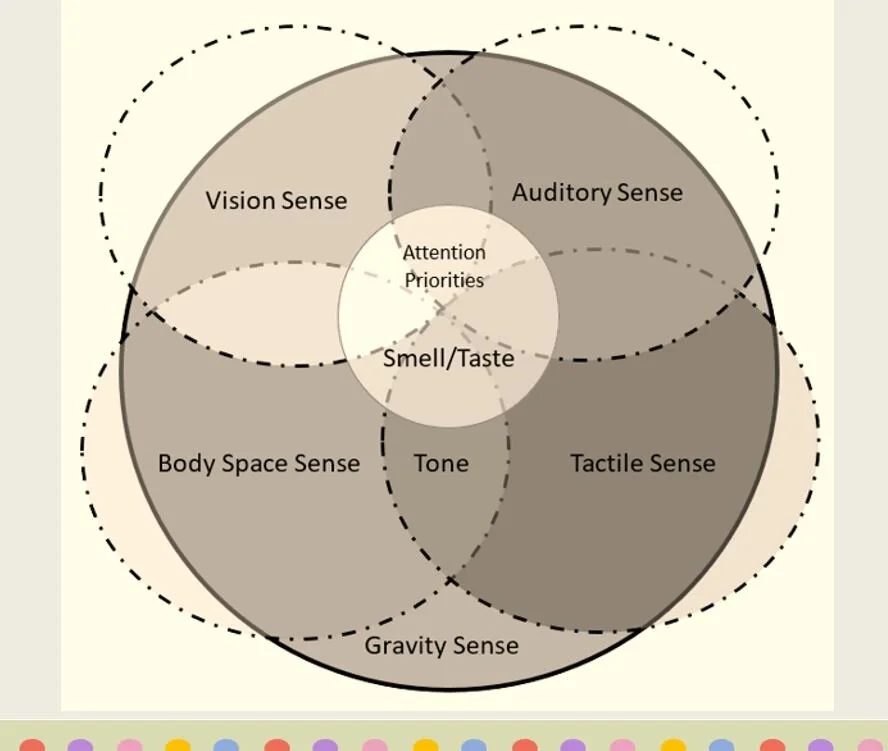Sensory-Motor Systems
All information about our world comes through our senses to the lower brain through the cranial and peripheral nerves. From the lower brain, this vital information goes to the cerebellum and the thalamus to be channeled into conscious processing in the upper brain. The frontal lobes use this sensory information to plan and execute movement. Without movement, there is no life or learning. At any point in this developmental process, issues can occur.
Most people know the five senses as the sense of:
Touch
Taste
Smell
Vision
Hearing
Often missed are the two body senses:
Gravity (Vestibulation)
Body in Space (Proprioception)
There are many ways that these senses can be disturbed, giving the lower and upper brain an alarming message. Developmental differences or damage in the sensory system can trigger anxiety and hypervigilance or the opposite: checking out. These differences can trigger motor responses that look awkward, immature or defensive to others.
All people are unique and not all examples may pertain to you or your student. Here are a few examples of sensory-motor issues that can contribute to behavior or learning challenges from case studies:
Examples of Some Common Sensory-Motor Issues
o Touch-sock and shoes are very difficult to wear
o Taste- bitter vegetables are totally rejected
o Smell- bathroom smells make it impossible to use, especially public ones
o Vision-objects coming from the side cause distress
o Vision-sustained focusing on reading is difficult
o Hearing-instructions are tuned out
o Hearing-outer noises disrupt sleep
o Gravity-upright posture is hard to sustain
o Gravity-riding in a vehicle can put to sleep or sicken
o Body in space-clumsy movement that knocks into people or objects

